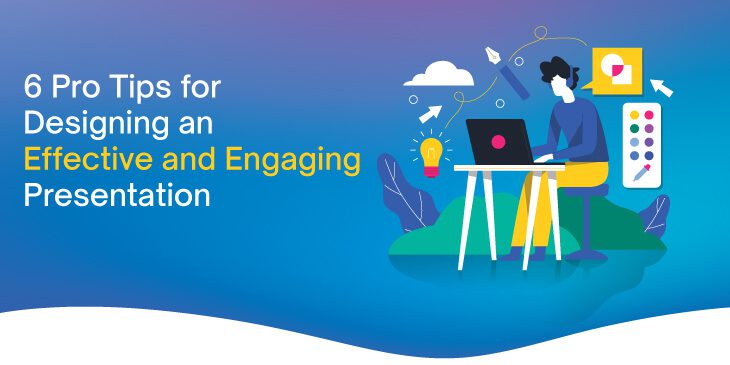 A powerful way to help your audience understand your vision or idea is by designing a creative and to-the-point PowerPoint presentation with which they can relate. A well written informative content, innovative infographics, and content emphasizing techniques go hand-in-hand with helping a novice or expert audience comprehending the concept behind a PowerPoint presentation. Whether you are a professional who has to deliver marketing plans with clients or a beginner looking to share the project details with your team members, these six tips could help you hone your presentation skills for excellence and effectiveness.
A powerful way to help your audience understand your vision or idea is by designing a creative and to-the-point PowerPoint presentation with which they can relate. A well written informative content, innovative infographics, and content emphasizing techniques go hand-in-hand with helping a novice or expert audience comprehending the concept behind a PowerPoint presentation. Whether you are a professional who has to deliver marketing plans with clients or a beginner looking to share the project details with your team members, these six tips could help you hone your presentation skills for excellence and effectiveness.
1. Simplicity makes it easier to remember
A simple slide design makes it easier to deliver the message and helps the viewers understand the concept or visualize the information flow. The basic concept behind a slideshow is to make the audience remember the idea, not the text. Another common mistake while designing a deck of slides is overcrowding the content, which doesn’t let the audience process the information easily; they simply jump from one bullet point to another. A simple, clean slide with creative infographics and the right amount of data placed in correct order helps the viewers pick up on your presentation’s highlights.
2. Choosing elements that bring value in a slide
A PowerPoint presentation isn’t a platform to share your message in a descriptive form. It is imperative to use only that content (objects, infographics, text, markers, etc.) that helps validate your message in the viewers’ minds. Unrelated or redundant objects or text derail a viewer’s focus from the key message you wish to deliver. While deciding and curating each element of a slide, your primary focus should be on evaluating the value it brings in completing your idea.
3. Know your audience before designing
While presenting to the tenured professionals from your company, highlighting the basics of a topic can easily make them lose their focus. Addressing the concerned problem (or your message) and straightforwardly sharing the possible solutions (or the purpose behind your presentation) can have a better impact than detailing the process in a slide filled with long text or bullet points. However, if you are looking forward to captivating a new audience with less technical background relevance from your sector, you would need to guide them through the points they can relate to. In both scenarios, you will find the information flow, related infographics, objects, and context make a huge difference in ensuring your message is delivered effectively. The audience has not lost the key-value behind your slideshow.
4. Use curiosity as a link to drive:
A common trait that everyone in an audience shares is the ability to anticipate the points they could look forward to in a presentation. This aspect can become resourceful while delivering a slideshow or a reason that makes them lose their interest. So while going through different slides, you can add certain elements to help keep your audience engaged and keep them on the verge of wanting to know the proceeding points. You can direct their interest with powerful visual elements or use related content between the slides to keep encouraging their curiosity.
5. 10-20-30 Rule of Guy Kawasaki
According to Guy Kawasaki, every slideshow has three essential elements that help make it effective and exciting for the target audience. First, a presentation should contain no more than 10 slides to ensure the viewers are not flooded with too much information. Second, the delivery session should be completed in a maximum of 20 minutes to keep the session exciting and brief enough to cover all the vitals. And the last one, the presenter should make the text easily visible by keeping the font size at least up to 30 points. This helps avoid over cluttering elements in a slide and brings viewers’ focus to the highlighting factors of your presentation.
6. Don’t let the slides convey a different story than yours
Preparing the presentation speech and designing a slideshow on a certain topic can often build up too much content for the audience to focus on. So using the slides to aid your speech is a more effective way of sharing your message. Choosing a suitable template, idea-provoking infographics, and understandable bullet points make the audience easily catch up with the information flow. Connecting the key points in the right sequence while switching the slides and delivering your speech help convey a story that seems simple to visualize and logical for any viewer.
What Makes a PowerPoint Presentation Good?
An effective slideshow includes a simple design with no clutter of images or text, and all the elements used in each slide are value-adding and are kept in the right sequence to help the presenter share his idea easily. Moreover, you can also use Guy Kawasaki’s 10-20-30 Rule for maximizing engagement and comprehension factor for your target audience.
This article has been scheduled in accordance with Socialnomics’ disclosure policy.









